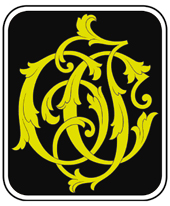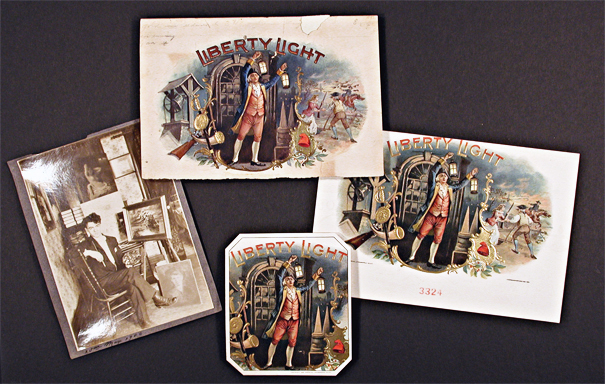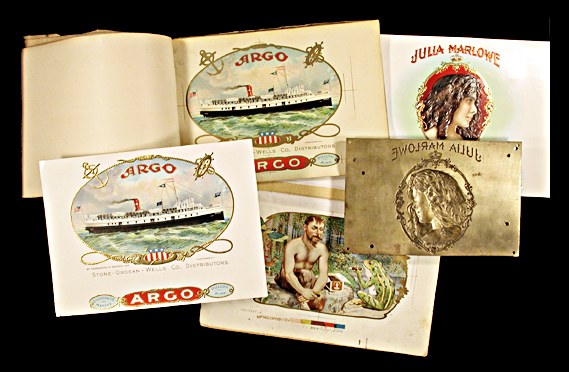|

THE JOHN and CAROLYN GROSSMAN COLLECTION
The
Winterthur Library at the Winterthur Museum & Country Estate
Route 52, Kennett Pike, Winterthur, Delaware 19735.
www.winterthur.org. Chromolithography
|
|

Fig.
1 "Social Smoke" litho stone and finished label
__________________________________________
Chromolithography, or
the technique of "printing in colors," had a dazzling and meteoric life. After centuries of black ink on white paper, chromo-lithography
burst onto the American scene about 1840 and then vanished by the 1930s. But during this nearly one hundred year period, chromolithography
revolutionized the printing industry and intoxicated the world with lush colorful hues. It transformed calling cards, wedding
announcements, greeting cards, tickets, cigar box labels, advertising posters and many other types of printed ephemera into
eye-catching works of art that proved too beautiful to be thrown away after temporary use.
|

Fig.
3 "Liberty Light" original watercolor sketch, innner and outer finished labels, and photograph of artist Henry Maier.
__________________________________________
The
chromolithographic process began with detailed watercolor "sketches" created by commercial artists like Henry Maier (Fig.
3). Skilled lithographic artists transferred these designs by hand onto Bavarian limestone printing slabs. Drawing in black,
in reverse image, and one image for each color, litho artists visualized how all colors would interact and overprint to re-create
the original watercolor sketches (Fig. 1). As many as twelve colors... and twelve stones... were printed in sequence with
amazingly accurate registration. Images were "polished off" the stones when all printing editions were completed. The stones
were then prepared for the next job.
|
|

Fig.
2 "Argo" progressive proof book and finished label, "Julia Marlowe" finished label and embossing die, and "Fauna" color proof
label.
|
The lithography part of chromolithography was invented by Bavarian printer Aloys
Senefelder around 1798. Based on the principle that oil and water do not mix, Senefelder drew images on stone in greasy crayon,
covered the remaining surfaces of stone with a thin film of water, and then applied printing inks to the stone. He discovered
that the greasy images attracted the printing inks while the non-greasy surfaces repelled them.
__________________________________________
©2016 All Rights Reserved.
|
